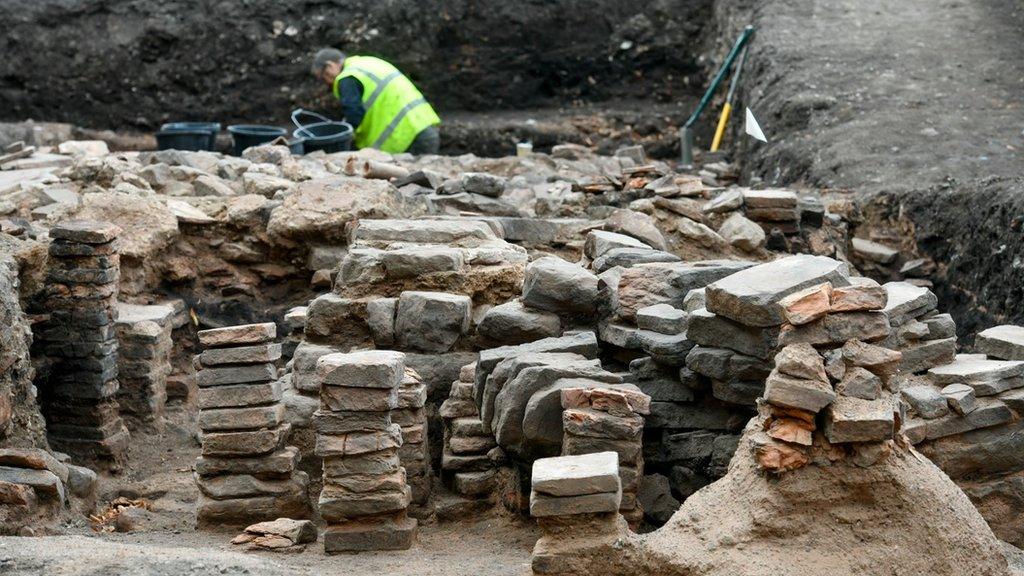Roman snail dye found in UK for first time
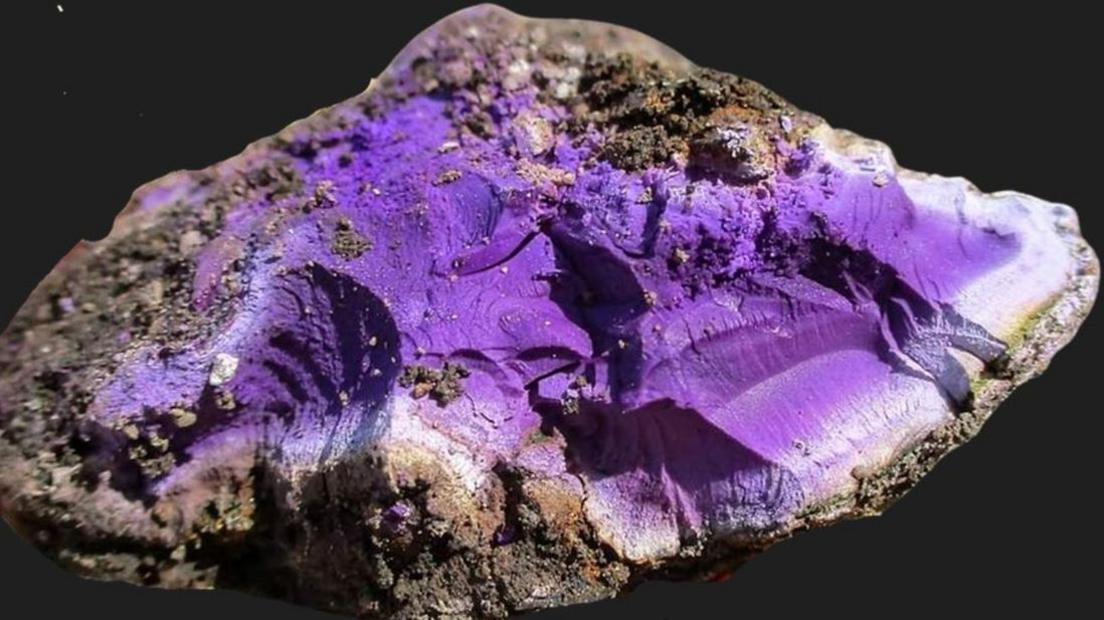
About 12,000 snails were needed to make two grams of the precious pigment in Roman times, archaeologists said
- Published
A rare dye made from snails for the robes of the Roman elite almost 2,000 years ago has been unearthed at a cricket club.
The chunk of Tyrian purple, roughly the size of a ping pong ball, was dug up at Carlisle Cricket Club as part of ongoing yearly excavations.
A Roman bathhouse was discovered at the site in 2017 and in the last three years 2,000 items including pottery, weapons, coins and semi-precious stones have been found.
Lead archaeologist Frank Giecco said the find was of "international significance" and the first time the precious pigment had been discovered in the UK.

Excavations at the site, discovered in 2017, have unearthed weapons, pottery and signet ring gems
Mr Giecco said the pigment was worth more than gold and would have been used to dye the clothes of figures in the imperial court and the "highest echelons" of society.
He said it was made from the glands of marine snail and about 12,000 were needed to obtain less than 2g of pigment.
"The collection of the snails and processing of the glands would have been very time-consuming, " Mr Giecco said, adding: "Hence the reason it is so expensive.
"It was used in ancient Greek and Roman wall paintings, as well as used as a dye in textiles."
The dye, which was mixed with beeswax to preserve it, was discovered at the site in October.
However, it has taken several months of chemical analysis to verify that it is purple Tyrian.
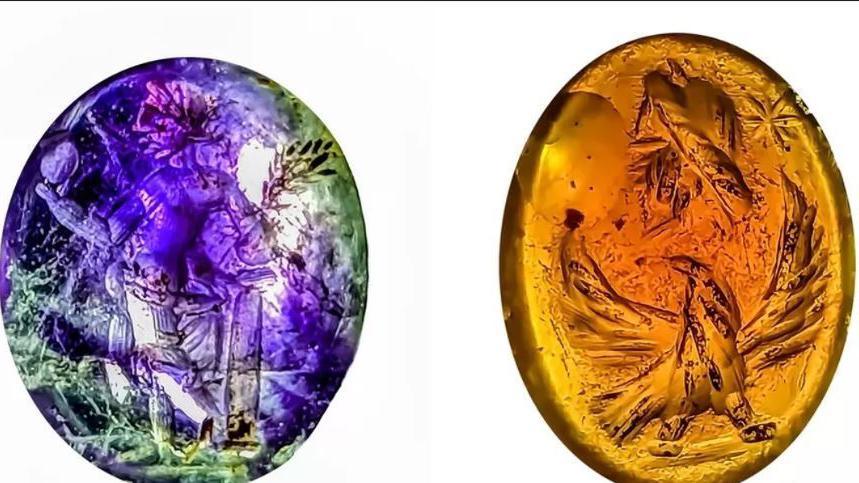
Semi-precious gems, which had probably fallen out of rings after the bathhouse steam loosen their glue settings, were recovered from drains at the site
Other finds uncovered at the site have also been described as being of international significance, including a pair of Roman god sculptures discovered in May last year and thought to date back as far as AD200.
The sandstone heads once formed part of sculptures standing 12 to 15 ft (3.5 to 4.5m) high.
In 2021, tiles with a Roman imperial stamp were uncovered indicating a link to third century Emperor Septimius Severus.
Mr Giecco said that it could not be proved that the emperor visited the Carlisle building, but that there was "compelling evidence" to suggest it was linked to his imperial court.
"The building is actually dedicated to his wife and uses a north African style of bathhouse construction - the emperor was from Libya," he added.
This year's dig, carried out by volunteers, begins on 7 May and runs until 17 June.
There are still a few places left for volunteers to sign up. , external

Two sculptures of Roman gods were discovered at the site in May 2023
Follow BBC Cumbria on X (formerly Twitter), external, Facebook, external and Instagram, external. Send your story ideas to northeastandcumbria@bbc.co.uk.
Related topics
- Published29 July 2023
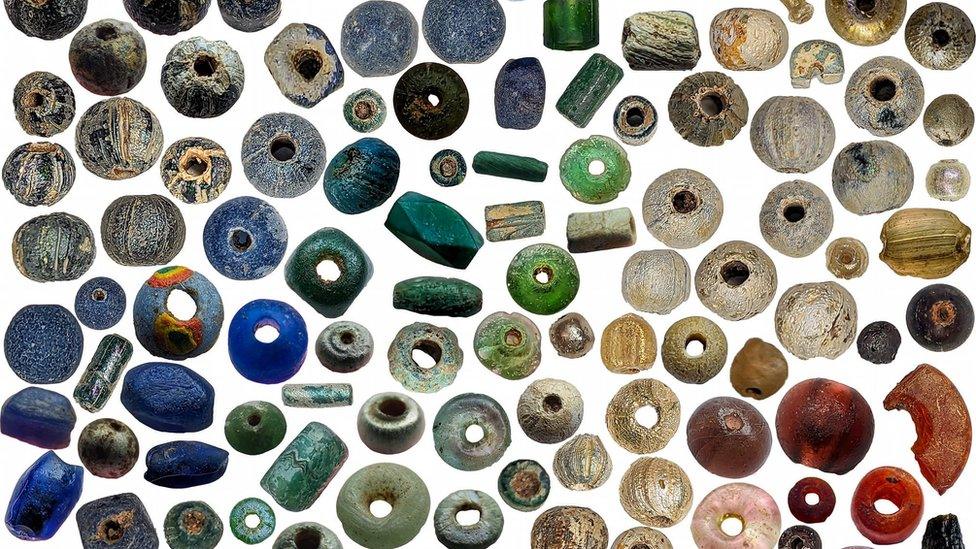
- Published4 November 2023
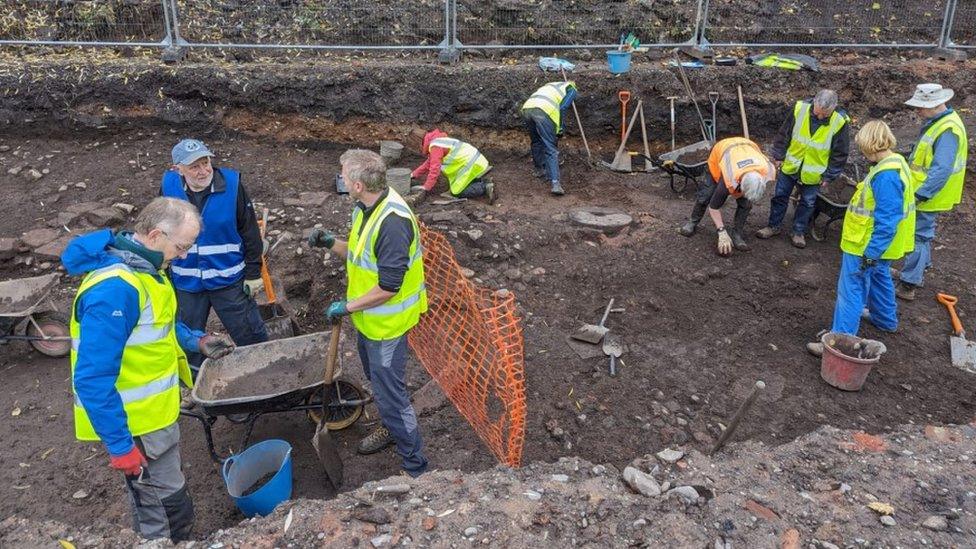
- Published31 January 2023
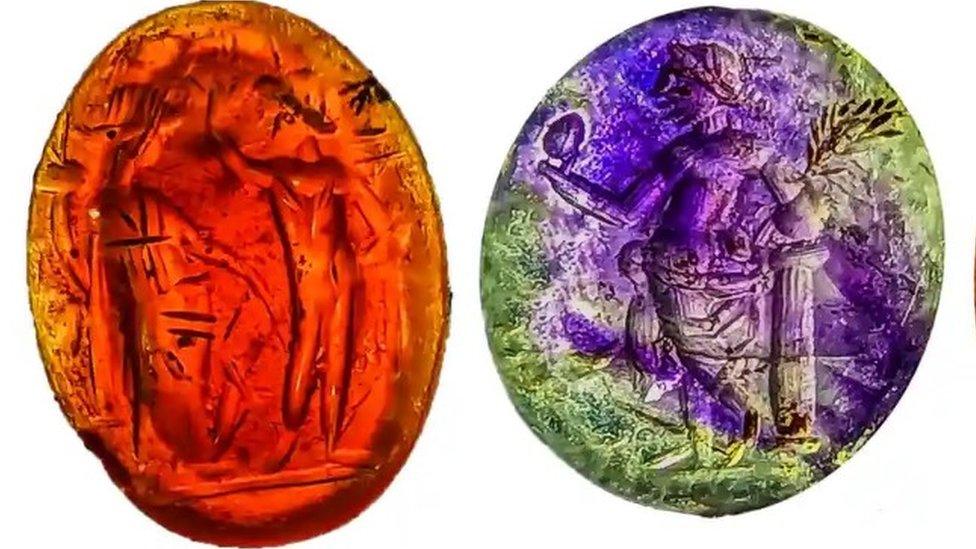
- Published26 September 2021
